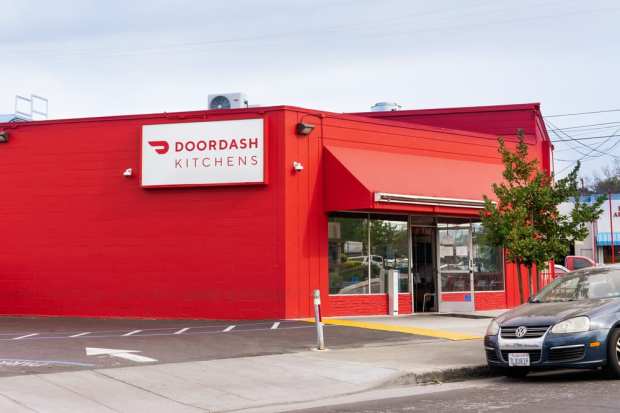No Rest For Ghost Kitchens As Restaurants Reopen

They first materialized seemingly overnight, out of nowhere. They often vanish during daytime hours only to return again, at night, around dinnertime. They are “ghost” kitchens.
In a novel effort to scale the growing trends of mobile order-ahead (MOA) and order-to-eat (OTE), ghost kitchens are a story of “right time, right place,” as they have fulfilled much of the demand for restaurant delivery orders during the COVID-19 pandemic. However, despite their utility and consumer value, ghost kitchens might be headed for a market correction.
Haunted by Overhead
When the ghost kitchen phenomenon began in earnest in early 2019, it was an arms race pitting CloudKitchens – backed by Travis Kalanick, Uber co-founder and ex-CEO – against Uber’s own budding Uber Eats and “Eats Delivery Hub” network. The hub consisted of nameless kitchens that cranked out delivery orders, primarily for aggregators like Grubhub, DoorDash and Deliveroo — often under make-believe restaurant brands.
The Paris debut of Uber Eats’ Delivery Hub seemed promising enough, and then Kalanick’s bid to back rival CloudKitchens ignited a year of emphatic headlines about what seemed like a new business model.
But as dining out now resumes in various forms in the post-pandemic era, and COVID-related trends like cooking more meals at home prove their longevity, some observers feel that the spike of ghost kitchens might be short-lived.
This could be a factor in Uber’s decision this week to exit the ghost kitchen business, as first reported by The Financial Times. Uber Eats Vice President Pierre-Dimitri Gore-Coty told the FT: “At this point, we don’t have a desire ourselves to own real estate. We’ve had a few pilots, but no intention at this stage to start our own proprietary network of dark kitchens.”
Meanwhile, Kalanick’s CloudKitchens concept is running into roadblocks, too. According to a flurry of recent headlines, it seems that real estate – even a network of commercial-grade kitchens for rent at the zenith of mobile ordering – is a bit of a bear to manage.
This is true even though CloudKitchens began as Los Angeles-based City Storage Systems, which is rehabbing distressed properties into things like commercial-grade kitchens. Recent reports suggest that out of 70 U.S. locations leased for CloudKitchens’ use, only about 10 were online as of mid-May.
Ghost Kitchens Are Still Alive (With Possibilities)
That said, word that Just Eat Takeaway has agreed to buy Grubhub for $7.3 billion – creating the largest delivery aggregator outside of China – is calling bearish outlooks for ghost kitchens into question.
Commenting on that deal, Just Eat Takeaway CEO and Founder Jitse Groen spoke for himself and Grubhub CEO Matt Maloney in saying, “Both of us have a firm belief that only businesses with high-quality and profitable growth will sustain in our sector.”
That “high-quality and profitable growth” is the dream for the triumvirate of dine-in restaurants, ghost kitchens and the aggregators that form their distribution system. Baseline economics of ghost kitchens also retain their appeal.
“As the restaurant industry — and the economy as a whole — recover, ghost kitchens will benefit from not needing the capital that traditional kitchens with a staff of servers and front-of-house staff and larger spaces will require,” Dorothy Creamer, senior research analyst for hospitality and travel digital transformation at IDC, told QSR Magazine. “What they will require, however, is a nimble, robust infrastructure.”
